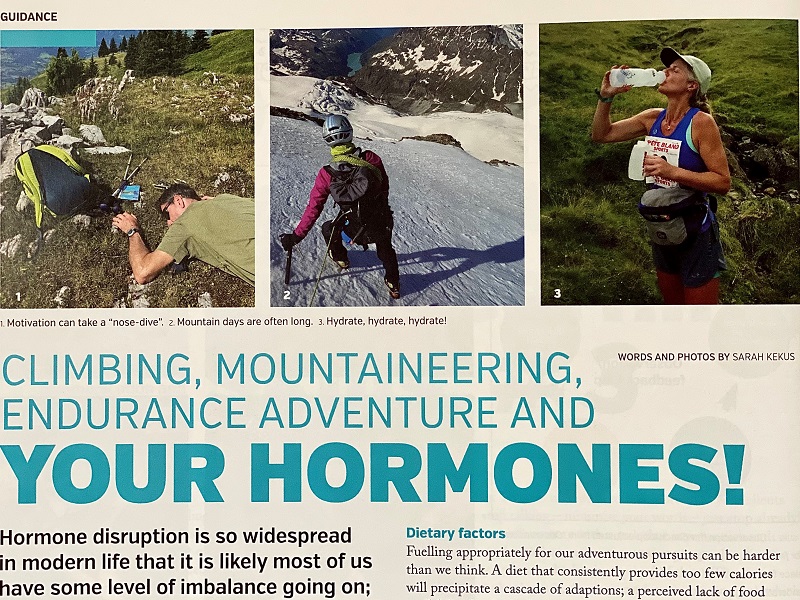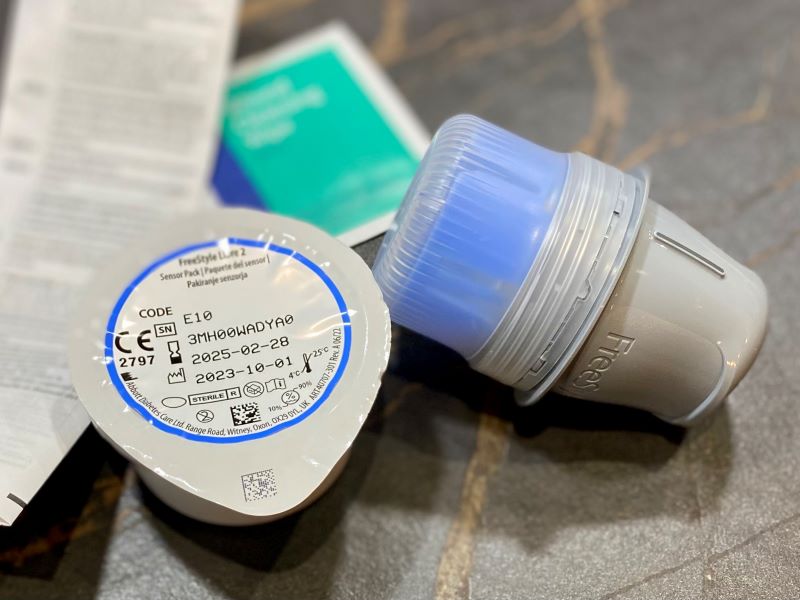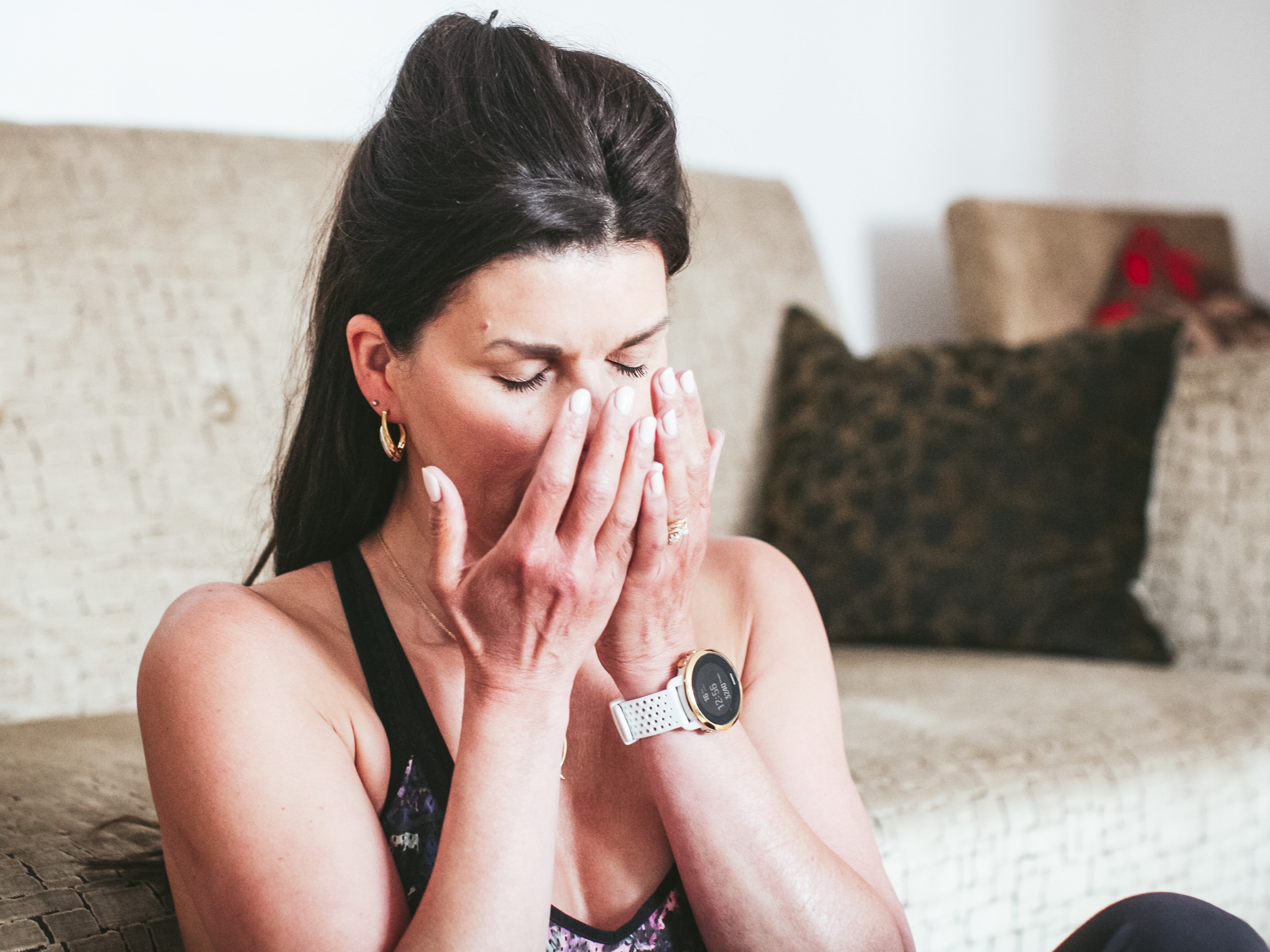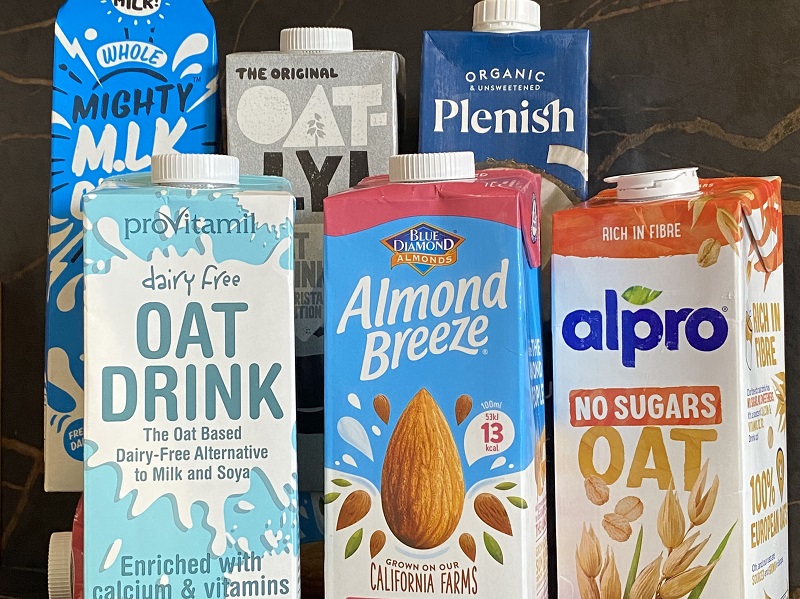Hormone disruption is so widespread in modern life that it is likely most of us have some level of imbalance going on; it is a pandemic of sorts! Maintaining hormonal homeostasis, particularly as we age, is a challenge for all of us; we have more than 60 different hormones to keep in balance and these chemical messengers control everything from reproduction and growth to mood, immunity and motivation. Hormones manage the functioning of our organs, e.g. heart, kidneys, digestion, and regulate fluid concentrations such as blood sugar. But levels decline as we age and with this decline comes an increased risk of imbalances, which can be tricky to spot, as signs are subtle, creep up slowly and are often attributed to other causes.
But, why should those of us who have chosen to spend a lot of time “hanging-out” in adventurous playgrounds fair any differently? Well, if we look at the top three mechanisms for hormone disruption – diet, lifestyle and toxic load – we can see that our “adventure-loving” lifestyle can present specific challenges. And, once imbalance creeps in, our body has to adjust. Adaptive physiology can bring some unhelpful changes however, that interfere with our ability to function optimally in the environment we love.
Dietary Factors
Fuelling appropriately for our adventurous pursuits can be harder than we think. A diet that consistently provides too few calories will precipitate a cascade of adaptions; a perceived lack of food availability by the body causes physiological stress – our brains need to be fed and if our food supply is in danger so are we. Low blood sugar will cause a surge in the stress hormone cortisol, which can mobilise glycogen stored in our muscles, to restore blood sugar levels. If this is not sufficient our body can break down muscle tissue and over-time this will lead to wastage of skeletal muscles as well as muscles in the heart and lungs. Furthermore, an energy deficit is a clear signal to the body that “all is not well” – a starving body is not capable of nurturing new life – so in women it precipitates a cascade of hormonal adjustments, ultimately leading to amenorrhea, which I’ll cover in more detail in part 2.
Equally problematic is a hyper-caloric diet or one where there is a high intake of simple carbohydrates e.g. sugary snacks, energy bars/drinks and a low intake of fat, fibre and protein. Erratic eating is part of mountain life; days are long, we run out of food or it is just not safe to stop and eat. The problem is compounded by eating a large meal late in the evening, especially if alcohol is added to the mix. The consequence of all this is a destabilisation of blood sugar; instead of fairly constant levels, a vicious cycle of peaks and troughs becomes established. Too much sugar, and insulin will be released to bring levels back down, then, if levels fall too low, cortisol will be released to raise levels again. The body adapts by increasing insulin production so that circulating levels remain higher. This doesn’t work well for anyone, and eventually will lead to insulin resistance, type 2 diabetes and increased levels of circulating oestrogen and testosterone.
Lifestyle Stresses
Life can be stressful enough but we often create our own stresses! Our stress response is primitive – we were designed to respond to short term stress; cavemen could run away, kill the tiger and enjoy tiger burgers for tea, or get eaten! The response is the same if we reach a crux move and can’t find any gear – our body doesn’t know whether a tiger chased us up there or if we are just out having fun!
This “fight or flight” response is actually well-suited to activities such as rock climbing – a boost of adrenaline can help us “power up” that tricky move, but prolonged stress, can lead to chronic adrenal overstimulation. Maybe you keep pushing your on-sighting day after day, or you spend a lot of time in areas of high objective danger, such as the Alps or Greater Ranges. In these situations, stress hormones start to remain elevated, ultimately leading to stress hormone decline. In particular, cortisol, which increases mental and physical energy and boosts confidence, will decrease, which is why our mood and motivation can take a “nose-dive” after sustained periods of adventure.
Toxic Load and Endocrine Disruptors
This one may surprise you but our “healthy outdoor lifestyle” can expose us to more chemicals than we think and some play havoc with our hormones. Plastic water bottles can contain Bisphenol A, a known endocrine disruptor and the common sunscreen chemical, Oxybenzone, has been linked with reduced sperm count, menstrual cycle disruption and thyroid issues. Also, how many times do you put the rope or a karabiner in your mouth? – plastic or paint covering can also increase your toxic load. In addition, our detoxification system – including the liver, kidneys, colon, skin and lymphatic system – is significantly challenged by mountain life; dehydration puts a strain on our kidneys, impairs lymph drainage and slows colon transit time. Clothes or sunblock, make it harder to excrete toxins through our skin and our liver might already be taxed due to alcohol and insufficient nutrients. Plus, poor sanitation (remote travel and mountain huts) poses a threat to our gut microbiome – unwanted “guests” can bring a host of toxic problems!
Management Strategies
The great news is that modest adjustments to lifestyle and diet can have a positive impact:
- Prioritise adequate hydration and avoid alcohol
- Avoid high-sugar foods and “energy” drinks/gels
- Increase complex carbohydrates, high quality protein & healthy fats
- Reduce caffeine, especially on an empty stomach or late in the day
- Eat regularly and avoid heavy meals late in the evening
- Keep track of your weight and adjust calorie intake accordingly
- Use sunscreen only where essential (e.g. hands & face) and look for a mineral-based one
- Check waterbottles are BPA-free
- Support your liver with a varied diet, including organic eggs and chicken (I also often recommend a broad-spectrum Liver Support Formula for my active clients)
- Hydrate, hydrate, hydrate – this is the best way to flush out toxins!
- Notice your gastro-intestinal health – get a stool-test if you regularly have grumbling guts
This is a two-part series – part 2 looks at female-specific imbalances; the health implications for women and strategies for maintaining balance through each life-stage.
